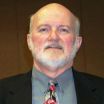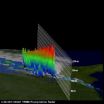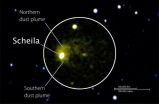(Press-News.org) Researchers eavesdropping on complex signals from a remote Wisconsin lake have detected what they say is an unmistakable warning--a death knell--of the impending collapse of the lake's aquatic ecosystem.
The finding, reported today in the journal Science by a team of researchers led by Stephen Carpenter, an ecologist at the University of Wisconsin-Madison (UW-Madison), is the first experimental evidence that radical change in an ecosystem can be detected in advance, possibly in time to prevent ecological catastrophe.
"For a long time, ecologists thought these changes couldn't be predicted," says Carpenter. "But we've now shown that they can be foreseen. The early warning is clear. It is a strong signal."
The implications of the National Science Foundation (NSF)-supported study are big, says Carpenter.
"This research shows that, with careful monitoring, we can foresee shifts in the structure of ecosystems despite their complexity," agrees Alan Tessier, program director in NSF's Division of Environmental Biology. "The results point the way for ecosystem management to become a predictive science."
The findings suggest that, with the right kind of monitoring, it may be possible to track the vital signs of any ecosystem and intervene in time to prevent what is often irreversible damage to the environment.
"With more work, this could revolutionize ecosystem management," Carpenter says. "The concept has now been validated in a field experiment and the fact that it worked in this lake opens the door to testing it in rangelands, forests and marine ecosystems."
"Networks for long-term ecological observation, such as the [NSF] Long-Term Ecological Research network, increase the possibility of detecting early warnings through comparisons across sites and among regions," the scientists write in their paper.
Ecosystems often change in radical ways. Lakes, forests, rangelands, coral reefs and many other ecosystems are often transformed by overfishing, insect pests, chemical changes in the environment, overgrazing and shifting climate.
For humans, ecosystem change can impact economies and livelihoods such as when forests succumb to an insect pest, rangelands to overgrazing, or fisheries to overexploitation.
A vivid example of a collapsed resource is the Atlantic cod fishery.
Once the most abundant and sought-after fish in the North Atlantic, cod stocks collapsed in the 1990s due to overfishing, causing widespread economic hardship in New England and Canada. Now, the ability to detect when an ecosystem is approaching the tipping point could help prevent such calamities.
In the new study, the Wisconsin researchers, collaborating with scientists at the Cary Institute for Ecosystem Studies in Millbrook, N.Y., the University of Virginia in Charlottesville and St. Norbert College in De Pere, Wis., focused their attention on Peter and Paul Lakes, two isolated and undeveloped lakes in northern Wisconsin.
Peter is a six-acre lake whose biota were manipulated for the study and nearby Paul served as a control.
The group led by Carpenter experimentally manipulated Peter Lake over a three-year period by gradually adding predatory largemouth bass to the lake, which was previously dominated by small fish that consumed water fleas, a type of zooplankton.
The purpose, Carpenter notes, was to destabilize the lake's food web to the point where it would become an ecosystem dominated by large predators.
In the process, the researchers expected to see a relatively rapid cascading change in the lake's biological community, one that would affect all its plants and animals in significant ways.
"We start adding these big ferocious fish and almost immediately this instills fear in the other fish," Carpenter says.
"The small fish begin to sense there is trouble and they stop going into the open water and instead hang around the shore and structures, things like sunken logs. They become risk-averse."
The biological upshot, says Carpenter, is that the lake became "water flea heaven."
The system becomes one where the phytoplankton, the preferred food of the lake's water fleas, is highly variable.
"The phytoplankton get hammered and at some point the system snap into a new mode," says Carpenter.
Throughout the lake's three-year manipulation, all its chemical, biological and physical vital signs were continuously monitored to track even the smallest changes that would announce what ecologists call a "regime shift," where an ecosystem undergoes radical and rapid change from one type to another.
It was in these massive sets of data that Carpenter and his colleagues were able to detect the signals of the ecosystem's impending collapse.
Ecologists first discovered similar signals in computer simulations of spruce budworm outbreaks.
Every few decades the insect's populations explode, causing widespread deforestation in boreal forests in Canada. Computer models of a virtual outbreak, however, seemed to undergo odd blips just before the outbreak.
The problem was solved by William "Buz" Brock, a UW-Madison economist who for decades has worked on the mathematical connections of economics and ecology.
Brock utilized a branch of applied mathematics known as bifurcation theory to show that the odd behavior was in fact an early warning of catastrophic change.
In short, he devised a way to sense the transformation of an ecosystem by detecting subtle changes in the system's natural patterns of variability.
The upshot of the Peter Lake field experiment, says Carpenter, is a validated statistical early warning system for ecosystem collapse.
The catch, however, is that for the early warning system to work, intense and continuous monitoring of an ecosystem's chemistry, physical properties and biota are required.
Such an approach may not be practical for every threatened ecosystem, says Carpenter, but he also cites the price of doing nothing.
"These regime shifts tend to be hard to reverse. It is like a runaway train once it gets going and the costs--both ecological and economic--are high."
###
In addition to Carpenter and Brock, authors of the Science paper include Jonathan Cole of the Cary Institute of Ecosystem Studies; Michael Pace, James Coloso and David Seekell of the University of Virginia at Charlottesville; James Hodgson of St. Norbert College; and Ryan Batt, Tim Cline, James Kitchell, Laura Smith and Brian Weidel of UW-Madison.
A tale of 2 lakes: One gives early warning signal for ecosystem collapse
First experimental evidence that radical ecosystem change can be detected in advance
2011-04-29
ELSE PRESS RELEASES FROM THIS DATE:
Missouri elk are being reintroduced in the wrong part of the state, MU anthropologist says
2011-04-29
According to prehistoric records, elk roamed the northwestern part of Missouri until 1865. Now, the Missouri Department of Conservation is planning to reintroduce elk, but this time in the southeast part of the state. While a University of Missouri anthropologist believes the reintroduction is good for elk, tourism and the economy, he said the effort may have unintended negative consequences that are difficult to predict.
R. Lee Lyman, the chair of Anthropology in the College of Arts and Science, has studied the history of mammals, conservation biology and wildlife management ...
Teenage Texting: A Roadway Danger
2011-04-29
Teenage Texting: A Roadway Danger
Distracted driving takes a heavy toll on our nation's highways: according to National Highway Traffic Safety Administration data, over 5,000 motorists are killed every year in crashes that involve driver distraction. Texting while driving is an especially dangerous form of distraction, as it involves taking your hands off the wheel, your eyes off the road and your mind off of driving. Teens are not only more likely to text, they are also more inexperienced behind the wheel: drivers under the age of 21 are involved in three times as many ...
TRMM Satellite sees massive thunderstorms in severe weather system
2011-04-29
The Tropical Rainfall Measuring Mission or TRMM satellite again flew over severe thunderstorms that were spawning tornadoes over the eastern United States on April 28 and detected massive thunderstorms and very heavy rainfall.
TRMM, a satellite managed by both NASA and the Japanese Space Agency, captured the rainfall rates occurring in the line of thunderstorms associated with a powerful cold front moving through the eastern U.S. on April 28. TRMM flew over the strong cold front and captured data at 0652 UTC (2:52 AM EDT) on April 28, 2011. Most of the rainfall was occurring ...
Rent Regulation Bill Advances Through New York State Assembly
2011-04-29
Rent Regulation Bill Advances Through New York State Assembly
Rent regulation law or rent law, a staple in the real estate landscape of New York City, has been eroding in recent years. Established after World War II, rent laws cap the amount of rent a landlord can collect for a particular rental unit. More than 300,000 affordable apartments have been reclassified as landlords exploit loopholes to charge more for rent under the old regulations.
Legislative Activity
Amidst concerns that the city is becoming increasingly unaffordable, lawmakers in the state Assembly ...
Alcohol, mood and me (not you)
2011-04-29
Thanks in part to studies that follow subjects for a long time, psychologists are learning more about differences between people. In a new article published in Current Directions in Psychological Science, a journal of the Association for Psychological Science, the author describes how psychologists can use their data to learn about the different ways that people's minds work.
Most psychology research is done by asking a big group of people the same questions at the same time. "So we might get a bunch of Psych 101 undergrads, administer a survey, ask about how much they ...
California Is One of the Deadliest States for Pedestrians
2011-04-29
California Is One of the Deadliest States for Pedestrians
Motor vehicle collisions involving pedestrians can happen in an instant: when a pedestrian steps off the curb, drivers inattentive to the crossing have only moments to react. Although pedestrian fatalities have actually been on the decline over the last decade, the number is still disturbingly high.
According to National Highway Traffic Safety Administration figures, 4,092 people died in 2009 in pedestrian accidents. Nonfatal pedestrian injuries are even more common: approximately 59,000 were recorded in 2009 ...
NASA's Swift and Hubble probe asteroid collision debris
2011-04-29
Late last year, astronomers noticed an asteroid named Scheila had unexpectedly brightened, and it was sporting short-lived plumes. Data from NASA's Swift satellite and Hubble Space Telescope showed these changes likely occurred after Scheila was struck by a much smaller asteroid.
"Collisions between asteroids create rock fragments, from fine dust to huge boulders, that impact planets and their moons," said Dennis Bodewits, an astronomer at the University of Maryland in College Park and lead author of the Swift study. "Yet this is the first time we've been able to catch ...
Wearing the Right Gear Can Save a Motorcyclist's Hide
2011-04-29
Wearing the Right Gear Can Save a Motorcyclist's Hide
For a motorcyclist, protective clothing is not a luxury, but a necessity.
Studies have found that motorcyclists who wear proper attire sustain fewer injuries in motorcycle crashes than those who do not. And while it is true that protective clothing will do little to shield riders involved in high-speed crashes, most motorcycle accidents occur at low speeds. In these types of accidents, motorcyclists are most likely to suffer injuries to the arms, legs and head. Wearing a helmet and the right type of clothing can ...
UCSB urban ecosystem research featured in leading ecology journal
2011-04-29
A team of scientists has produced an innovative new study of the environmental impact of major urban ecosystems, published in the April issue of the journal Ecological Applications.
The team includes Joseph P. McFadden and Jennifer Y. King, both of UC Santa Barbara's Department of Geography. They analyzed environmental data gleaned from the "Twin Cities Household Ecosystem Project," a study of 3,100 households in the cities of Minneapolis and St. Paul, Minn., and surrounding areas. The article is the first major paper to come out of the project.
The data analysis yielded ...
Molton Brown Launches New Body Gel and Body Spray
2011-04-29
Molton Brown has announced the launch of two new products to its bath, body and fragrance collection. The two products, Vitalising vitamin AB+C body hydrating gel and Vitalising vitamin AB+C eau fraiche are a welcome addition to the brands original AB+C bath foam and shower gel.
Vitalising vitamin AB+C is a highly successful bath and shower product for Molton Brown. To further capitalise on its much loved fragrance and engage the existing dedicated AB+C ambassadors, Molton Brown has chosen to complete the product family, which is anticipated to become a unisex favourite. ...
LAST 30 PRESS RELEASES:
Scientists trace microplastics in fertilizer from fields to the beach
The Lancet Obstetrics, Gynecology, & Women’s Health: Taking paracetamol during pregnancy does not increase risk of autism, ADHD or intellectual disabilities, confirms new gold-standard evidence review
Taking paracetamol during pregnancy does not increase risk of autism, ADHD or intellectual disabilities
Harm reduction vending machines in New York State expand access to overdose treatment and drug test strips, UB studies confirm
University of Phoenix releases white paper on Credit for Prior Learning as a catalyst for internal mobility and retention
Canada losing track of salmon health as climate and industrial threats mount
Molecular sieve-confined Pt-FeOx catalysts achieve highly efficient reversible hydrogen cycle of methylcyclohexane-toluene
Investment in farm productivity tools key to reducing greenhouse gas
New review highlights electrochemical pathways to recover uranium from wastewater and seawater
Hidden pollutants in shale gas development raise environmental concerns, new review finds
Discarded cigarette butts transformed into high performance energy storage materials
Researchers highlight role of alternative RNA splicing in schizophrenia
NTU Singapore scientists find new way to disarm antibiotic-resistant bacteria and restore healing in chronic wounds
Research suggests nationwide racial bias in media reporting on gun violence
Revealing the cell’s nanocourier at work
Health impacts of nursing home staffing
Public views about opioid overdose and people with opioid use disorder
Age-related changes in sperm DNA may play a role in autism risk
Ambitious model fails to explain near-death experiences, experts say
Multifaceted effects of inward foreign direct investment on new venture creation
Exploring mutations that spontaneously switch on a key brain cell receptor
Two-step genome editing enables the creation of full-length humanized mouse models
Pusan National University researchers develop light-activated tissue adhesive patch for rapid, watertight neurosurgical sealing
Study finds so-called super agers tend to have at least two key genetic advantages
Brain stimulation device cleared for ADHD in the US is overall safe but ineffective
Scientists discover natural ‘brake’ that could stop harmful inflammation
Tougher solid electrolyte advances long-sought lithium metal batteries
Experts provide policy roadmap to reduce dementia risk
New 3D imaging system could address limitations of MRI, CT and ultrasound
First-in-human drug trial lowers high blood fats
[Press-News.org] A tale of 2 lakes: One gives early warning signal for ecosystem collapseFirst experimental evidence that radical ecosystem change can be detected in advance



